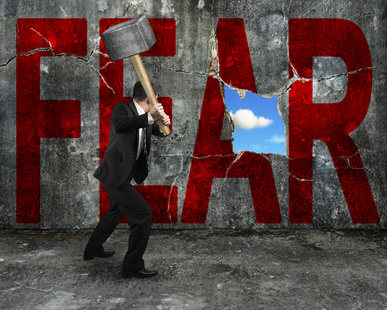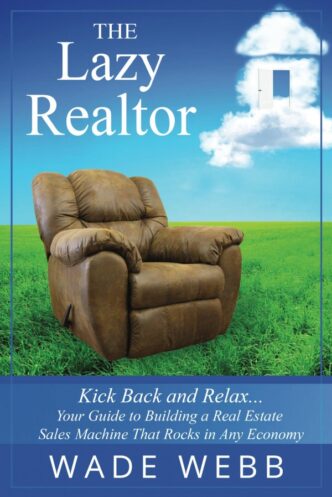
THE TYPES OF FEAR
To stop living in fear, you must understand the underlying psychology so that you can actively work against it. To a point, fear and anxiety have a place in healthy human psychology. Acute fear is a normal emotion that signals a potential threat to your physical or emotional safety. If you’re ever in an accident, feel you’re being followed or experience some other immediate threat, you’ll notice your blood starts pumping faster. Adrenaline shoots through your veins. You have a heightened awareness that allows you to take fast action in order to save yourself or others. Acute fear is a natural response that helped our ancestors survive. There is another type of fear that occurs when the acute fear response becomes hyper-sensitive. It’s called chronic fear or indirect fear, and it occurs when we are continually exposed to low-level yet stressful events. We might watch a lot of news about war, political divisions or the latest disease discoveries, causing us to irrationally anticipate negative events. Unlike acute fear, chronic fear can lower our natural life-saving response and cause us to believe we need to be “saved” by an outside force.
WHY AM I LIVING IN FEAR?
According to research from Harvard, just over 19% of the total population has experienced an anxiety disorder in the previous 12 months. They’re some of the most common psychological issues in the U.S. In the modern world, it’s typically chronic fear that causes our deep-seated anxiety issues, and everything from the media to caffeine has been blamed. But living in a state of blame has never helped anyone solve their problems. It’s time to take ownership of your emotions and transform your life. So, what’s the best way to deal with fear? You must learn to dance with it. In the video below, Tony reveals how to use fear to your advantage — instead of letting it use you.
SIGNS YOU’RE LIVING IN FEAR
Would you believe that many people go through life without realizing they’re living in fear? That’s because fear is often confused with comfort – we become comfortable with our lives, and we think that we are happy and fulfilled. Certainty is one of our Six Human Needs, but when we become too comfortable, it starts to hold us back. Here are a few signs you are living in fear:
Perfectionism. The need to be perfect is a mask we wear to protect ourselves from finding true intimacy and connection. As Tony says, it’s also the lowest standard in the world, because it is impossible to achieve.
Settling. On the other hand, settling for less than you deserve is a powerful indicator you’re letting your need for certainty run your life. If you don’t have an extraordinary, passionate relationship and a job you absolutely love, you’re living in fear.
Procrastination. Always putting your goals off until “tomorrow” or “when I have more time” is a classic delay tactic of those who are living in fear. It’s time to stop making excuses and start achieving your dreams.
Numbing yourself. When you’re living in a beautiful state, you don’t need drugs or alcohol to enjoy your life. You’re open to the world, you’re the master of your emotions and you feel pure joy each and every day.
HOW TO STOP LIVING IN FEAR
With chronic fear, you’re not experiencing anxiety – you’re living in it. The fear response becomes a maladaptive lifestyle, influencing everything you think, feel and do. Fear keeps you stuck in a self-perpetuating cycle of defeat and frustration. The upside to fear is that the emotions surrounding it are usually so unpleasant that they drive you to find another way. Don’t let fear control you. There are many strategies for how to stop living in fear, from self-care to exercise to seeking professional help. When you commit to facing your fears, you’re able to discover strategies to overcome them and find peace.
1. DETERMINE THE SOURCE OF YOUR ANXIETY
If you’re living in fear, your anxieties have escalated to the point that they’re running the show. You’re thinking about your worries constantly without much mindfulness as to what’s behind them. To stop living in fear, you must pinpoint what’s causing your distress. Get out a piece of paper and brainstorm a list. When you’re finished, circle the items that are tangible concerns – fears that your house will burn down, your kids will go missing or you’ll lose your job tomorrow. Start giving yourself a sense of control by writing a few actions you can take to prevent these things from happening. Also recognize the intangible concerns – fears of the apocalypse, alien invasion from Mars or worldwide economic collapse. You’ll see that these have very little chance of happening – but you’ll also see that these fears often have deeper roots. If your fears fall into this category, you’ll need to do some self-reflection to discover how to stop living in fear.
2. RECOGNIZE THAT LIFE HAPPENS FOR YOU
“Life doesn’t happen to you, it happens for you,” as Tony Robbins says. Truly understanding and accepting this concept is the first step to fulfillment. When you put an end to the blame game and start becoming the master of your own destiny, endless possibilities open up to you. And when you see the world as a place of opportunity, not obstacles, you don’t let fear control you. The reason for determining the source of your anxiety isn’t to give you an excuse to keep living in fear. It’s to help you assert power over those fears so that they no longer control you. Once you identify the source, you can change your story – and change your mindset. The first step is recognizing that you have a choice. You can blame outside forces for your emotions and continue to feel out of control. Or you can take charge of your life and learn how to stop living in fear.
3. STOP THE EXCUSES
Like blame, excuses are a defense mechanism we use to avoid facing our problems. It’s easy to push our hopes, desires and dreams aside when we have excuses: There’s just not enough time, I don’t have the money or the resources, I have a family, I’m too busy. And we start to hide behind those excuses instead of taking action to move forward. Excuses are comforting when we’re living in fear. They’re safe. But excuses will also bring you back to exactly where you started. Remember that the next time an excuse floats into your mind. Are you truly where you want to be in life? Or are you falling back on fear and choosing to be comfortable instead of facing a challenge? By becoming more cognizant of your brain’s proclivity for using excuses so you won’t be held accountable, the better you will become at dismissing them.
4. TURN YOUR “SHOULDS” INTO “MUSTS”
In your mind, if you have no choice but to succeed – if achieving your goal is an absolute must – then nothing else matters. Sacrifices won’t even be a question. Excuses go out the window. You’ll do whatever it takes to make it happen. Period. Even the most successful people feel like they’re living in fear sometimes. The difference is that rather than allowing fear to creep in and suck the life right out of their dreams, they know that the price they will pay if they don’t give their goals and visions every ounce of energy and focus they have is far scarier. They know the real fear is living a life where they have settled or compromised what they really wanted. How do you adopt that mindset and perspective? Imagine yourself at 80 years old, nearing the end of your life. You are sitting in your rocking chair, reflecting on how you lived your life. Now, look back on your life as if you had not achieved the goal you are after at this moment. How has this affected the course of your life? What are your regrets? What do you wish you had made more time for? What do you wish you had attempted? Is there sadness and regret? Are you wondering, “What if. . .?” In this way, you can use fear to propel you toward your ultimate goal.
5. ADOPT A GROWTH MINDSET
People often give up on what they want because they believe that reaching their goal is beyond their abilities. They continue living in fear and settle into their lives, thinking that their goal is unattainable so they don’t even bother. But the most successful people foster a growth mindset. They don’t think of their abilities as fixed, but rather as flexible. And when faced with a setback, they work harder. They adopt a new strategy. They keep seeking a solution. They don’t give up when things become challenging. Instead, they find new ways to adapt and work harder to achieve their goals.
6. LEARN THAT PAIN BRINGS VALUABLE INSIGHT
There isn’t one successful person in the world who hasn’t had to overcome major obstacles. The most painful experiences can help refine what you want and what you don’t want in life. Failure, disappointment, dead-ends – these can all be used as a means of reflecting and saying, “This didn’t work. It wasn’t the right fit. So what do I really want?” Remember, we are built to adapt. So embrace your inner strength and use each experience as a tool to help you learn more about yourself and what you really must have in life. When you’re facing a painful experience or feel ready to give into fear, picture someone you admire who faced adversity – they wouldn’t have achieved the success they now have without learning how to stop living in fear.
7. PRACTICE SELF-CARE
Mastering your emotions and changing your mindset is psychological – but would you be surprised to learn that the psychological is also physical? Next time you feel like you’re living in fear, change your posture and adopt a “power pose.” It can make you feel more confident and less fearful. Other self-care habits have an effect on your state as well. Physical activity is proven to reduce depression and anxiety, so next time you feel fear coming on, get out and go for a walk, practice yoga or take a bike ride. Mindfulness meditation is also proven to combat anxiety and depression and even lower blood pressure. Eliminating caffeine and alcohol from your diet is another self-care tip that’s essential to lowering anxious feelings. When you combine physical and psychological self-care, you have the recipe for how to stop living in fear.
8. ADOPT AN ABUNDANCE MINDSET
Fear cannot coexist with positive emotions. You cannot feel both scared and joyful, or afraid and peaceful. You can’t feel fear and gratitude at the same time, either – but you can replace one with the other. When you are grateful, fear disappears and abundance appears. You shift your focus from the negative to the positive. Where focus goes, energy flows, so when you change your mindset in this way, you find that you naturally bring more positivity – and less fear – into your life. Adopting an abundance mindset is key to unlocking how to stop living in fear. You can do this by keeping a gratitude journal, practicing priming or meditation, using visualization, coming up with empowering incantations and more. Next time you’re anxious or afraid, you’ll have a powerful toolbox that you can access to overcome those emotions.
9. BE FULLY PRESENT
When we’re living in fear, we’re often also living in either the past or the future. We let our past mistakes haunt us and affect our future decisions. We live in so much fear of what could happen that we forget to enjoy what is happening. As Tony tells us, “The past does not equal the future unless you live there.” In today’s super-connected world, it’s easier than ever to live in the past – reconnecting with toxic people and reminiscing about old relationships. When surfing the Internet, it’s easy to get caught in fantasizing about your next relationship or vacation plans that will never manifest. Stop missing your life. Put your phone down. Step away from the computer. Take up a new sport or game. Meet people in the here and now. Start living instead of worrying.
10. KNOW THAT FAILURE IS INEVITABLE
After all this work, you still need to accept one truth: You will fail. It’s just part of the process. Any successful person will tell you that. Failure provides insights and inherently corrects the faulty ways of approaching a problem. There is no teacher as impactful as the sting of failure and no lesson in resilience better than the burn of rejection. If you use these experiences as unique information, and adjust your strategy and approach the next time around, you will have an advantage that no one else does. With the right mindset you can change your story and say goodbye to living in fear. If you’re ready to learn how to stop living in fear, you have to decide that your dreams are more important than your fear of failure. Make the decision today to master your fears and start existing as the most joyful, successful version of yourself possible.
Strength and courage,
Wade



